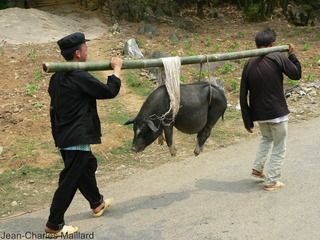Análisis de la red de la cadena de productos de porcinos enfermos en el norte de Vietnam: riesgo de diseminación de enfermedades
DOI:
https://doi.org/10.19182/remvt.31872Palabras clave
cerdo, cadena de suministro alimentario, evaluación de riesgos, enfermedades de los animales, fraude, VietnamResumen
Entre enero y julio de 2016 se realizó un estudio para investigar la red de comercio de cerdos enfermos que supuestamente ha estado en funcionamiento en el norte de Vietnam durante décadas. Desde principios del 2015, los periódicos locales han publicado numerosas advertencias sobre la existencia de esta red ilegal, generando una gran preocupación por parte de los consumidores y las autoridades. El objetivo de este estudio fue investigar la cadena de productos para identificar la red comercial, evaluar el riesgo de diseminación de enfermedades y proponer soluciones preventivas. Los resultados mostraron que la cadena de productos provenientes de cerdos enfermos incluía agricultores, intermediarios, mataderos y consumidores en los tres distritos estudiados (Van Lam, Van Giang y My Hao, en la provincia de Hung Yen). La evaluación de riesgos cualitativos determinó que los intermediarios y mataderos eran los actores centrales en esta cadena de cuantía descontrolada. Regulaciones administrativas adecuadas, independientemente de la importancia de estos actores, serían cruciales para limitar los efectos negativos de los productos de cerdos enfermos. Aún más, una intervención adecuada evitaría amenazas a otras fincas ganaderas y efectos a largo plazo en la salud humana.
Descargas

Descargas
-
Resumen1442
-
pdf 355
Publicado
Cómo citar
Número
Sección
Categorías
Licencia
© M.N.Hoang et al., publicado por CIRAD 2020

Esta obra está bajo una licencia internacional Creative Commons Atribución 4.0.





